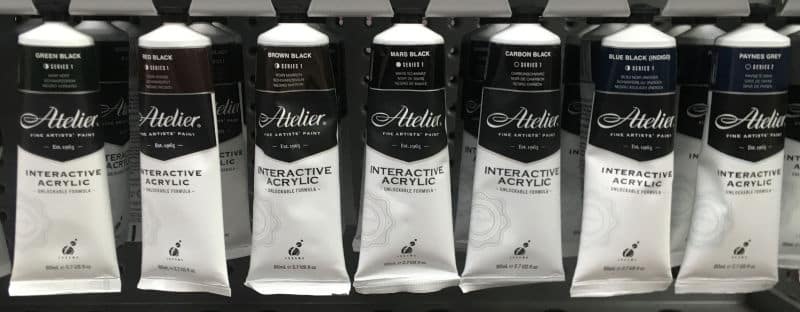
Black isn’t technically a colour — at least, not according to science. It’s the result of all light being absorbed, while white is what we see when all wavelengths are reflected. But artists don’t see colour in terms of light waves. We see it perceptually, and black is most definitely a colour in our world.
Whether you use it regularly or avoid it altogether, black paint plays a powerful role in painting. It shapes contrast, defines form, and influences mood. In this guide, we’ll explore how to use black in painting, clear up common myths, and look at the different types of black paint available to artists.
What Is Black in Art?
Like white, black doesn’t appear on the traditional colour wheel. Yet in practice, it’s everywhere. We see black when very little light is reflected off a surface, which gives it a unique presence on the canvas.
Unlike white, which is usually added for highlights or tinting, black can also be mixed using other colours. Many artists prefer to create their own chromatic black – a black made from mixing complementary or primary colours – because it allows for subtle shifts in warmth or coolness, depending on the pigments used.
A Brief History of Black Paint
Black has carried a wide range of meanings throughout history. Often associated with night and the unknown, it has symbolised everything from death, solemnity and secrecy to power, elegance and sophistication.
Black pigment has been around a long time. Cave painters used charcoal from burnt wood as far back as 30,000 years ago. Later, artists created more intense blacks by burning bones or grinding manganese oxide from rocks. In medieval Europe, black became the colour of authority. Clergy, judges and royalty adopted it for its gravity and dignity. (Judges still wear black robes today.)
Fast forward to the 19th and 20th centuries, and black became the uniform of Romantic poets, politicians, and fashion designers alike. Its presence has always been strong – whether solemn, rebellious, or refined.
Should You Use Black Paint?
Artists are famously divided into two camps: those who always include black on their palette, and those who never touch it.
Even the greats couldn’t agree. John Singer Sargent used black liberally, while Monet refused to use it at all. So whether or not you use black is a personal choice – but understanding how it behaves and what it can do is essential.
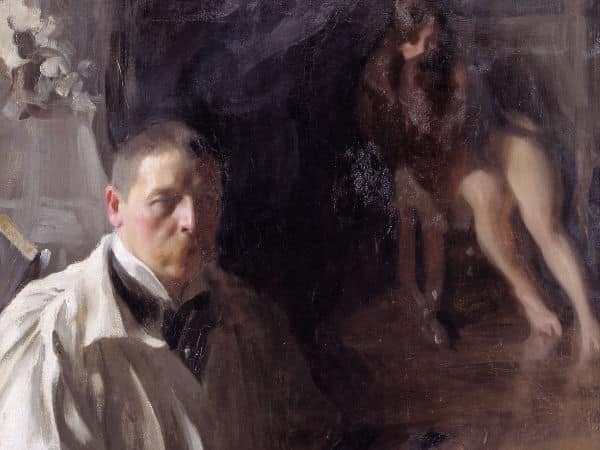
Swedish painter Anders Leonard Zorn famously created an entire palette using only four colours: white, yellow ochre, vermilion, and ivory black. In this limited Zorn palette, black replaces blue in mixtures, creating surprisingly rich and varied results.
Misconceptions About Black Paint
Let’s tackle a few myths about black paint:
1. “Black makes colours muddy.”
This happens when black is used without understanding colour bias or transparency. Yes, black can dull a colour, but that isn’t always a bad thing. In fact, dulling or darkening a colour is sometimes exactly what’s needed. When used with intention, black won’t ruin your painting.
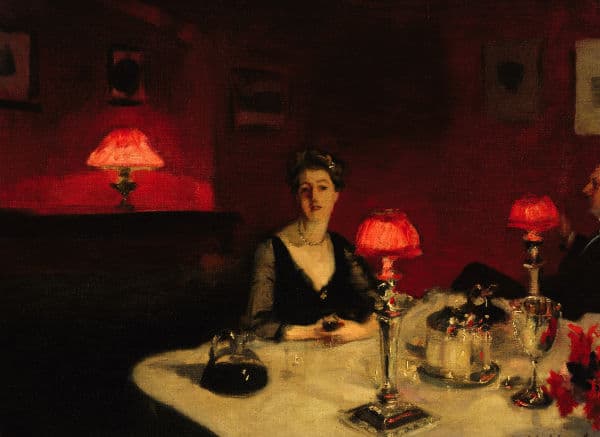
2. “Black makes paintings gloomy.”
Not true. Gloom comes from poor composition or colour choices, not from black itself. Black is what allows your lights to sparkle. Brights can’t shine without darks, and high contrast often brings a painting to life.
3. “Real artists don’t use black.”
This idea likely stems from the Impressionists. Their plein air scenes were filled with ambient light, and true black was rarely present in the natural world. Instead of adjusting the tone, they shifted hue. That doesn’t mean black is wrong – it just means it wasn’t right for their style.
In fact, many other styles rely heavily on black. Renoir called it “the queen of all colours,” and said it “adds a certain lightness.” Used with care, black paint can unify a piece, anchor your composition, and push values to the extremes.
Why Black Paint Still Matters
Black is the darkest dark on the value scale – and value is what holds a painting together. Whether you use it straight from the tube or mix your own chromatic black, having access to this depth is crucial.
Yes, it’s strong. Yes, it can overpower. But that’s what makes it so useful. When placed next to other colours, black affects how they appear. It can cool them down, dull them, or make them pop.
So should you use black paint in your art? That’s up to you. But if you do, don’t just think of it as a dark blob on the palette. Think of it as a tool for contrast, emotion, structure, and subtle shifts in colour temperature. The more you understand it, the more power it will give you.
Characteristics of Tube Blacks
Ivory Black (Bone Black)
Ivory black used to be made by carbonising boiled ivory waste. Today it’s made from animal bones.
Hue – deep velvety cool in mass tone but warmer, brownish in undertone
Tinting strength – moderate therefore most useful in colour mixing.
Drying time and durability – based on linseed oil, it is very slow drying.
Transparency – semi-transparent and thinned down can be used as glaze. It has moderate covering power.
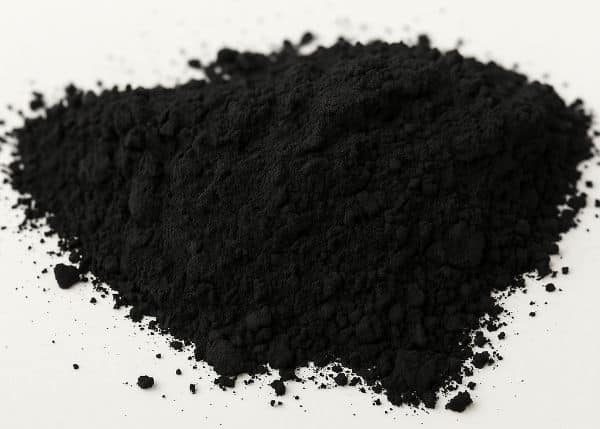
Lamp Black (Carbon Black)
Lamp black was originally produced from the soot deposited in lamps. Nowadays it’s produced from burning oil and gas.
Hue – deep velvety black with a bluish grey undertone
Tinting strength – strongest tinting strength of all blacks and a good choice when dark blacks are needed.
Drying time – linseed oil based so it’s very slow drying
Transparency – semi to fully opaque and gives the deepest black coverage
Lightfast
German expressionist painting using strong black.
Mars Black (Iron Oxide Black)
Mars black is different in that it is not carbon based but a mix of a synthetic iron oxide pigment developed in 20th Century and an organic pigment. It is an alternative to natural earth pigments.
Also called black iron oxide, it is the least toxic of the tube blacks the most opaque and fast drying. It has neutral undertones so is ideal for mixing.
Paynes Grey
Often used instead of black, Paynes Grey is a mixture of blue and black to form a very dark grey.
Asphaltum
Asphaltum is a transparent black brown originally made from ground up mummies – I kid you not!
Now made from a mineral pigment gilsonite also known as bitumen. It was very popular in the 18th Century. Gilsonite is sourced in Utah and Colorado in the USA. Because of its warm undertones, it’s useful for glazing to create depth and warmth in shadows.
Gamblin has recreated this colour synthetically using mars red and bone black.

Black 3.0
Black 3.0 is renowned for being one of the darkest blacks available, absorbing up to 99% of visible light. This acrylic paint is characterized by its ultra-matte finish, making it an exciting choice for artists and designers seeking a deep, rich black. In order to get the colour to appear so dark it has been made matte. As a result it may not always be suitable for every situation, like when varnishing is required.
My painting above has the glasses painted with Black 3.0
What does make it exciting though is the possibility of painting a large area with the paint and then using varnish to make certain areas gloss – say in a geometric patterns. Doing this will allow you to paint a completely black painting which has a visible design.
You can view my review of the paint in the video above.
There are other paints that claim to be pure black, like Black 4.0. In my experience these “Blackest black” paints are all extremely similar in their result, so just go for the best priced version.
What is Chromatic Black?
Chromatic black is a colour that looks black but doesn’t contain any black pigment. (PBk). It’s hard to find ready-mixed in a tube, although Gamblin does have a chromatic black made from a mix of Phthalo Green and Quinacridone Red.
The Advantages of Chromatic Black
Most artists prefer to make their own chromatic black mixtures because they are more subtle than tube blacks and because the artist can determine the colour bias, (warm or cool).
True black (tube black) absorbs light waves and can look flat or “dead” in the context of a painting if used incorrectly. A chromatic black will reflect the dominant colour used to mix it e.g., if you have mixed a cool black it will have a subtle bluish tone and blends in more easily with surrounding colours.
How to Mix Your Own Chromatic Black
1. Mix the three primaries:
Blue + Red + Yellow
Tip – a Ratio of roughly 4B + 2R + 1Y seems to get you in the ball park quickly. Then adjust from there. The paints I like using are French Ultramarine, Cadmium Red and Cadmium Yellow for my chromatic black mixes.
2.Mix a primary and it’s complementary colour:
Yellow + Purple
Blue + Orange
Red + Green
This works because the mixture will consist of all three primaries. It will however seldom give a very dark black, rather a black bias towards one of the main colours in the mix.
3. Mix a brown and a dark blue:
Burnt Umber + Ultramarine Blue
This mix is fabulous for landscape paintings.
4. Mix a blue, a red, and a brown:
Prussian Blue + Alizarin Crimson + Burnt Sienna
Prussian Blue + Alizarin Crimson + Burnt Umber
This chromatic black works great for landscapes and still life paintings.
5. Mix a dark green with a brown or dark blue
Viridian Green + Raw Umber
This works great for a deep forest green or very dark areas in a classic still life.
In general using transparent colours for your mixes will produce a deeper, richer black, especially when layering or glazing. That’s because transparent pigments let light pass through and bounce around, giving more optical depth resulting in a luminous darkness — a black that feels “alive” rather than flat.
One of the problems of mixing your own black instead of using tube black, is keeping the colour consistent.
Tips for Using Black
To test if your mixed black is biased towards one of the colours in the mix: place a dab of your black to the side then add a tiny touch of white to the mix. This will help to reveal any colour bias in the mix.
It’s also possible to create a biased chromatic black by mixing tube black with another dark colour. Blue for a cool bias and red for a warm bias.
Use separate brushes for darks and lights to prevent white, (even the smallest spec), from getting in as it will wash out your darks.
Remember black doesn’t have to be pitch black. In a scene your black can appear as a wide value range from almost white to black. Painting in the darks or shadows often has beginners reaching for black. Black doesn’t have to be used at its darkest value where some other value would be more suitable.
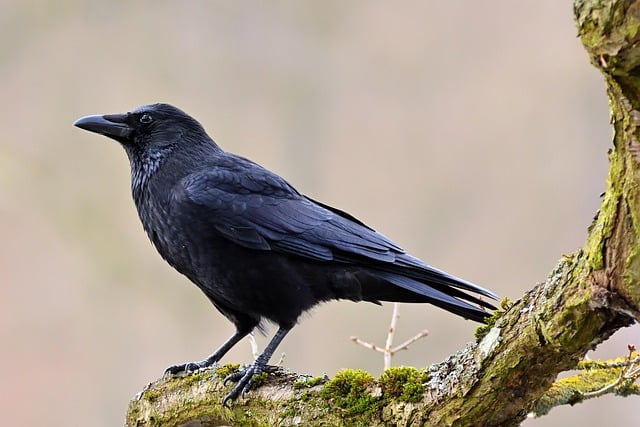
Take a look at the photo of this crow. It is all black, but due to how the light is hitting each part of the bird. Some areas appear almost white.
Create your value scale by adding small amounts of white – creating what is known as a shade and not a tone of any colour it is mixed with.
Black is one option you have of making a base colour darker and duller. Used properly it does an excellent job, but it isn’t the only option, adding any colour darker than your base colour would work, as would adding a complementary colour.
By shifting the temperature of your black paint to match the colour temperature in your painting, you’ll achieve a level of refinement that will give your painting the edge.
In Summary
There are many types of black paint at your disposal. For the beginner it’s probably best to simplify things by opting for one tube black (blue biased Payne Grey being my favourite) and mixing your own chromatic black from the primaries for other black variations. As you progress on your painting journey you can gradually buy one or two more tube blacks to supplement your collection.
If you enjoyed this tutorial, then you are going to LOVE our Ultimate Guide to White Paint.
Pin Me
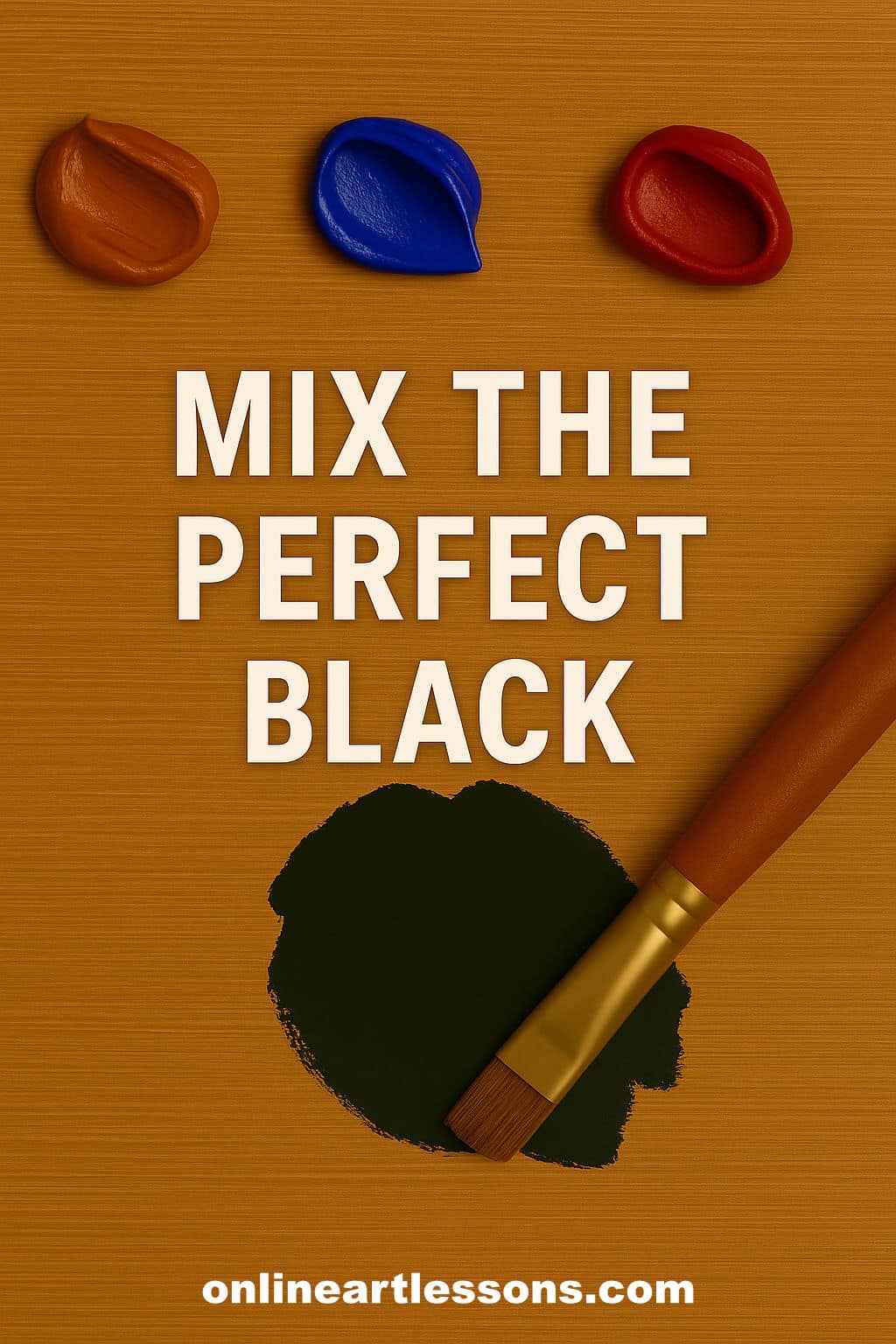

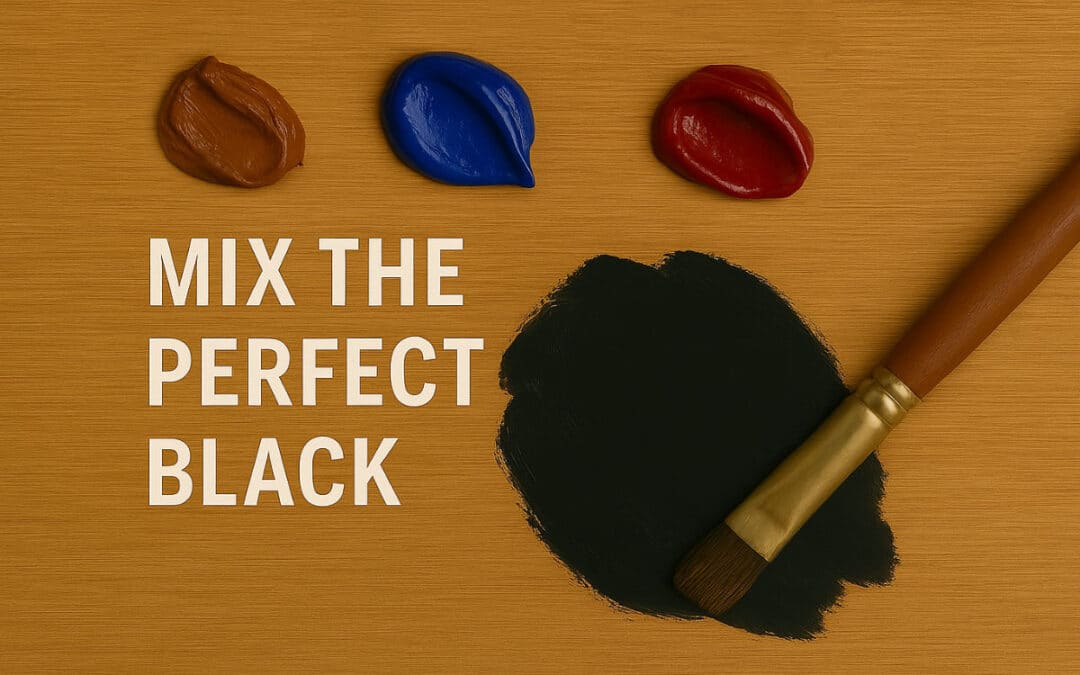
Really good tutorial. Turns out I’ve been using black correctly. There is a small error – there is no picture of the crow.
Yay, great job Donald


and thanks for picking up about the missing crow pic. I have added it in.
Wow this is very informative! Thanks again
So just wondering which black would be the best choice if you wish to paint a solid background for a painting? Lamp black you mentioned is one of the most opaque and offrs a matt finish.
and
Would there a “Mars black" in oil paints?
My go to blacks are lamp black for anything super dark and one mixed myself for a softer black. The black you would use in each situation depends on the colour bias you need. (warm or cold)
You do also get Mars black in oil.
I finally got around to making a color mix chart because I need some gray colors (to simulate stainless steel). I added titanium white to each of the mixes you provide as well as to mars black. The final mix I tried was silver color paint with mars black. One issue I discovered is that when I mixed white with one of the multicolor mixes (for example the chromatic), the white brought out differences in the mix composition. It seems like this could be a problem if I didn’t mix up enough and had to make more. Am I missing something? I’m wondering if it might sometimes be more preferable to start with mars black and add a touch of burnt umber, sap green, or whatever color to get the hint of color in the black and then mix the white to get my gray.
By the way – the silver looked promising.
By lightening a colour you will be able to see the true underlying better. Sometimes this does mess you around if you are having to remix a colour.
There are two ways around this:
1) mix up more paint than you think you will need at the start;
2) Retain a little of the original colour before you run out. That way you can add some white into it to reveal it’s true colour bias when matching the colour the second time around.